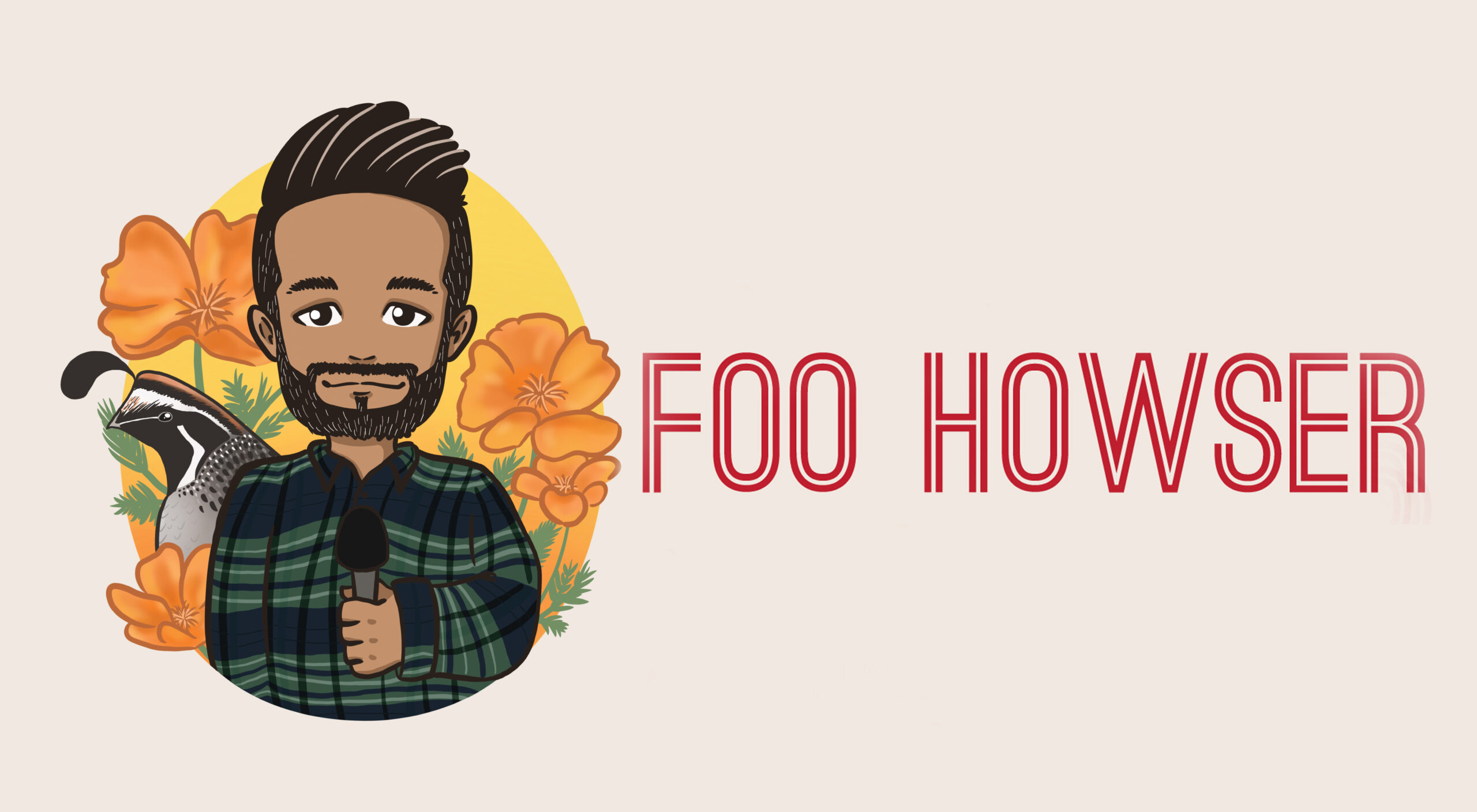Anaheim is home to an annual Fall Festival and Halloween Parade that has been celebrated for 100 years. I had never heard of it until I met Derek Bracho aka Foccacia Boi (thanks to my video on UC South Coast) and he told me about this amazing tradition and suggested that I should do a video on it. I finally got around to it this year and it’s been one of my favorite video’s to research and put together so far.
In the early 1920s, the leaders of the little farming community of Anaheim were dealing with a problem. The mischief and pranks that were being played on “All Hallow’s Eve” were getting out of hand. Fences were being stolen, windows were being soaped, outhouses were being turned over, and wagons and buggies were being put on barn roofs. To try and steer the energy of Anaheim’s youth toward more wholesome fun, the local merchants association decided to hold a Halloween Festival and Carnival in 1923, complete with costume contests and carnival games. The event was a massive hit—not only did it keep the vandalism down, but also fostered community pride amongst city’s residents.
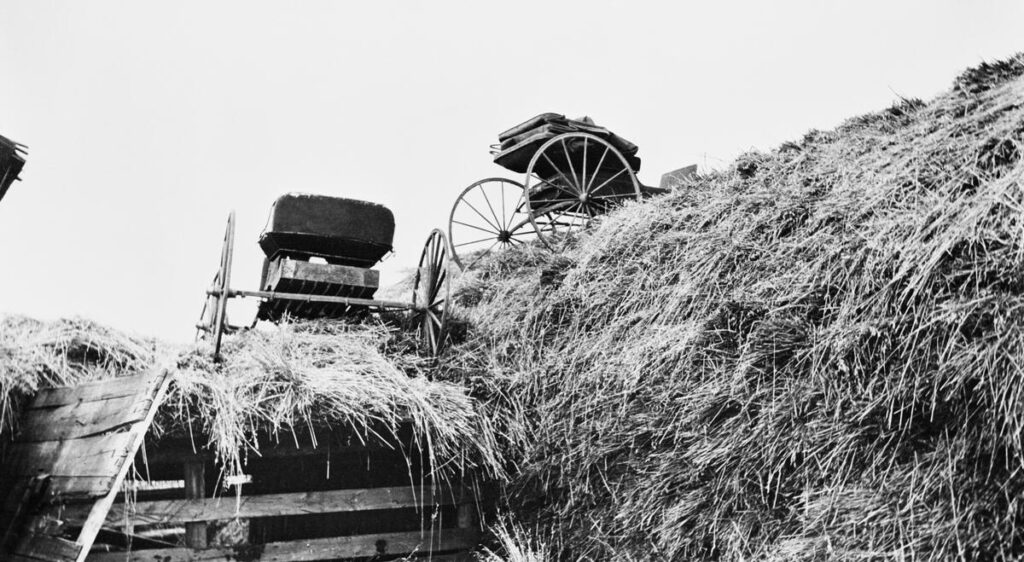
Photo Credit: Glenbow Library and Archives Collection.
The following year a parade was added, where over 20,000 people attended to view the procession led by baseball superstars Babe Ruth and Walter Johnson, who happened to be playing a Halloween charity game in the neighboring city of Brea.
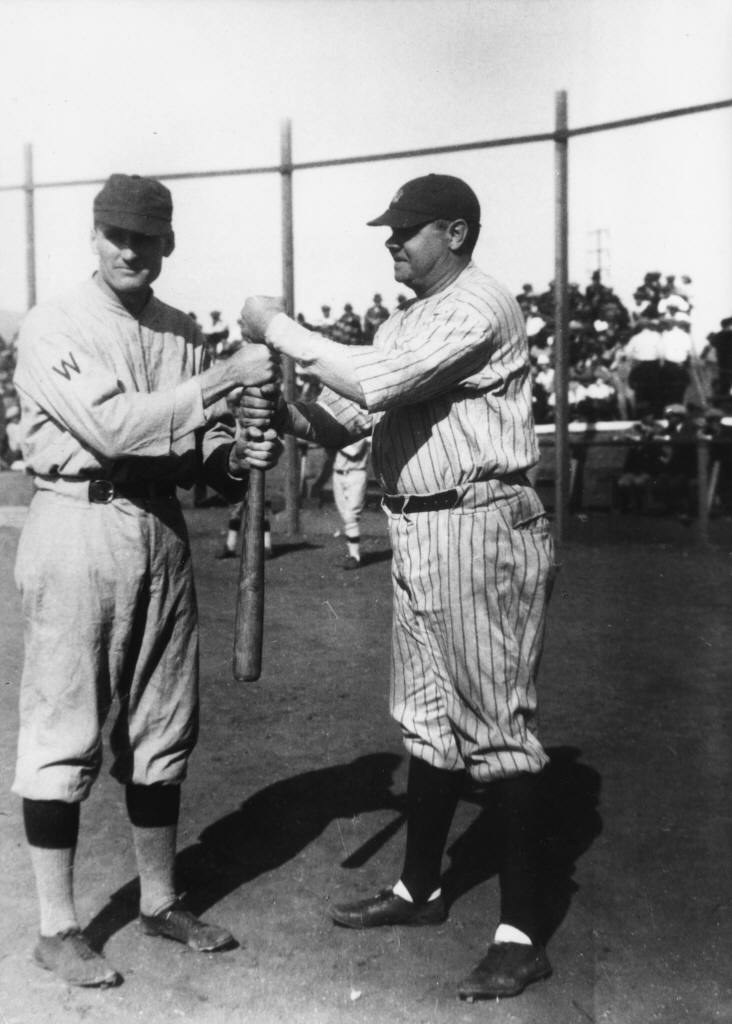
Photo Credit: Courtesy of the Anaheim Public Library’s Heritage Center.
The Halloween Festival and Parade became a cherished annual tradition and as the city of Anaheim grew, the celebration grew along with it eventually becoming one of the largest Halloween celebrations in the country, with new features being added throughout the years. Including an early morning Halloween breakfast, a horse show, a kiddies costume parade, shop window painting and the whiskerino and slick-chick contests—beauty contests for men and women, whiskerinos were judged on how well they grew and cultivated their facial hair, while the slick-chicks, later renamed Miss Halloween, were judged on the originality of a costume of their own creation.

Photo Credit: Courtesy of the Anaheim Public Library’s Heritage Center.
The celebration really seemed to hit its stride during the 1950s, where each year’s celebration had a different theme. 1953’s “Out of this World” theme stands out due to the iconic “Rocket Witch” float, the platoon of roving Martians, and the “Flying Sasser” that was built by neighborhood kids. That year’s festivities drew 100,000 spectators and that number would consistently be surpassed every year during that decade.

Photo Credit: Courtesy of the Anaheim Public Library’s Heritage Center
1953 was also a significant year, because Disney became involved in the festivities for the first time. The Halloween Parade Committee had invited Los Angeles businesses to sponsor floats, and one invitation was sent to Walt Disney Studios. Unbeknownst to the committee, Walt Disney had been secretly eyeing Anaheim as the possible location for Disneyland and given the opportunity to join the city’s biggest event and foster some goodwill, he offered to have Disney artists design 6 floats for the parade. This extraordinarily offer both baffled and delighted the committee so much that they renamed this section of the parade “Walt Disney’s Fairyland.”
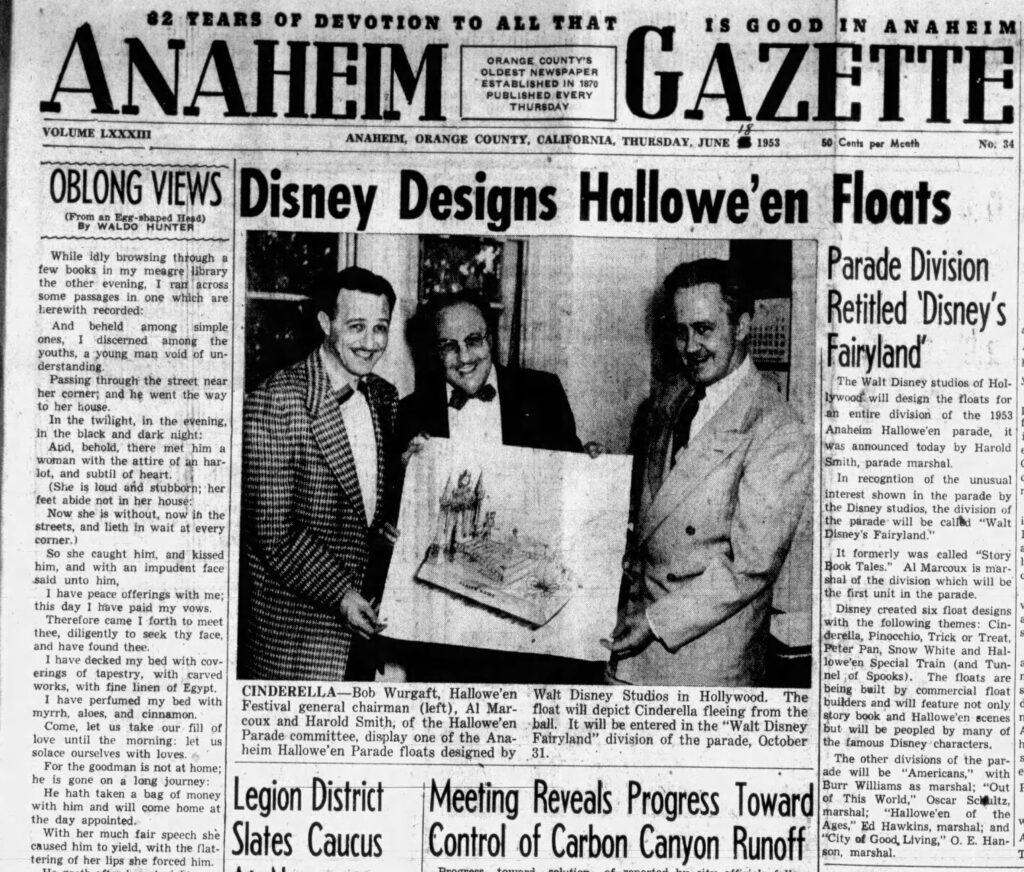
The following year, Donald Duck was the Grand Marshall of the Parade and with the construction on Disneyland already underway, the parade featured previews of the theme park’s attractions, with floats depicting a fairytale castle, a riverboat, and circus train. 1954 is also the year that Walt Disney gifted “Andy Anaheim” to the city, to serve as its official mascot. Andy would go on to become the official logo of the Halloween Festival and is still beloved by residents.
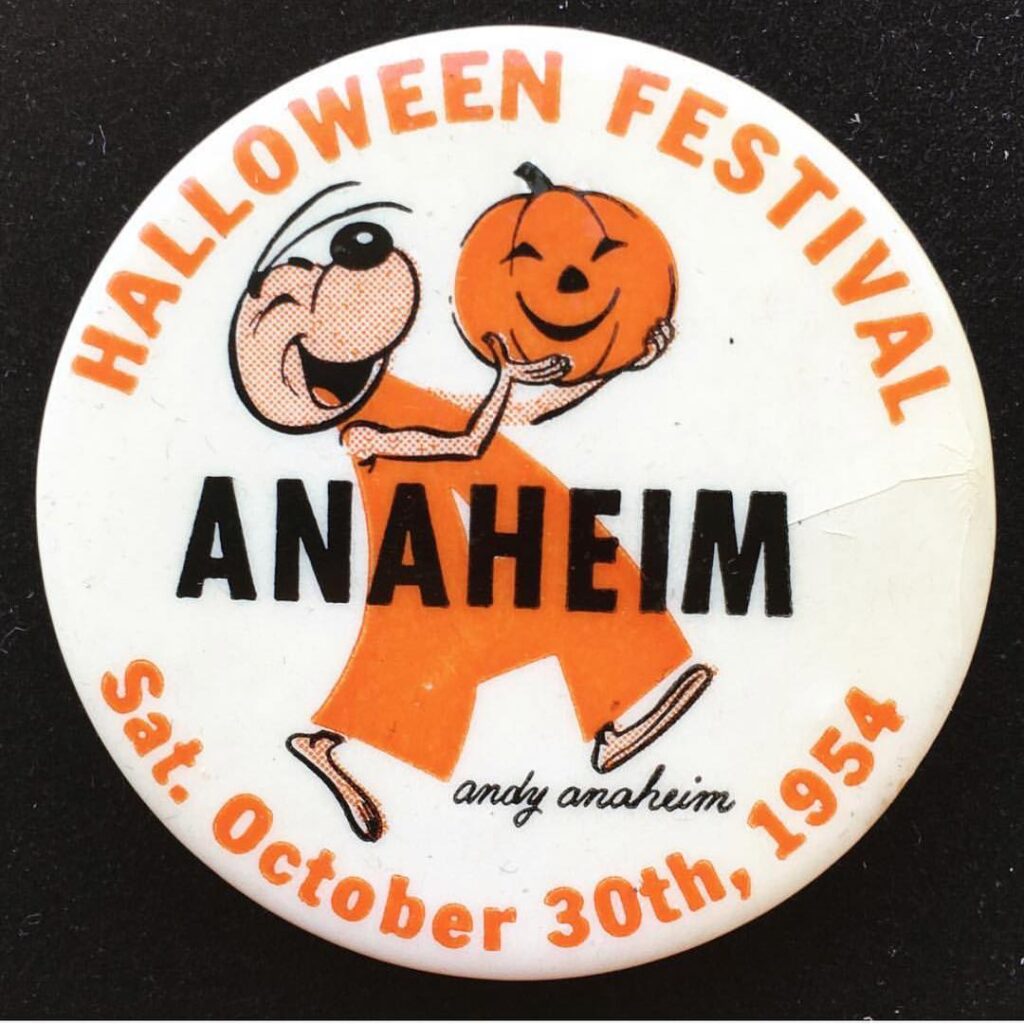
Photo Courtesy of the Anaheim Fall Festival and Halloween Parade.
With Disneyland opening in 1955, the theme park was a prominent feature of that year’s festivities, with the Disneyland band leading a horse-drawn circus wagon carrying the Mickey Mouse Mouseketeers.
The celebration continued to grow in popularity during the 1960s, even being broadcast on live TV by local news outlets. However, as Anaheim’s agricultural industry gave way to tourism and ranchers sold off their land for development, the historic downtown businesses that had been vital to the celebration saw their customers drawn away to modern shopping malls and centers. By the 1970s the city’s urban sprawl covered over 40 square miles and the role of small-town center that the historic downtown played was gone. The city council launched a redevelopment plan that demolished the original 200 acres of downtown and now, without a strong downtown to bolster the annual Halloween event, the festivities began to undergo extreme hardships.

In 1976, the Chamber of Commerce, which had organized and sponsored the festivities since their inception, ended their participation. The city council stepped in to co-sponsor the event in 1977 with the newly incorporated Anaheim Halloween Festival Association, but this was a foreshadowing of future hurdles to come.
By. 1983 the city was no longer co-sponsoring the event, but did agree to provide assistance in the form of police, fire, and park services. The celebration was in jeopardy of being cancelled in 1986 due to the high cost of liability insurance. Then in 1991, the city cut the event to save $50,000. The celebration limped along in the following years, smaller in size, but kept alive by a group of dedicated citizens who refused to let the tradition completely die out. Luckily some new residents would arrive that would revitalize the celebration.
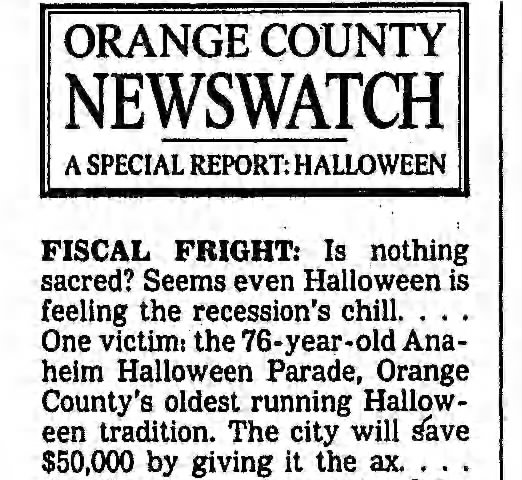
In 2009, Jody Daily and his husband Kevin Kidney, two former art directors for Disney who helped design many attractions, parades, and shows, purchased a historic Victorian home in the city. While doing research on the history of their home, they became involved with the Anaheim Historical Society, where they kept coming across photographs of the Halloween Festival and Parade and discovered that the event was still taking place on a smaller scale.
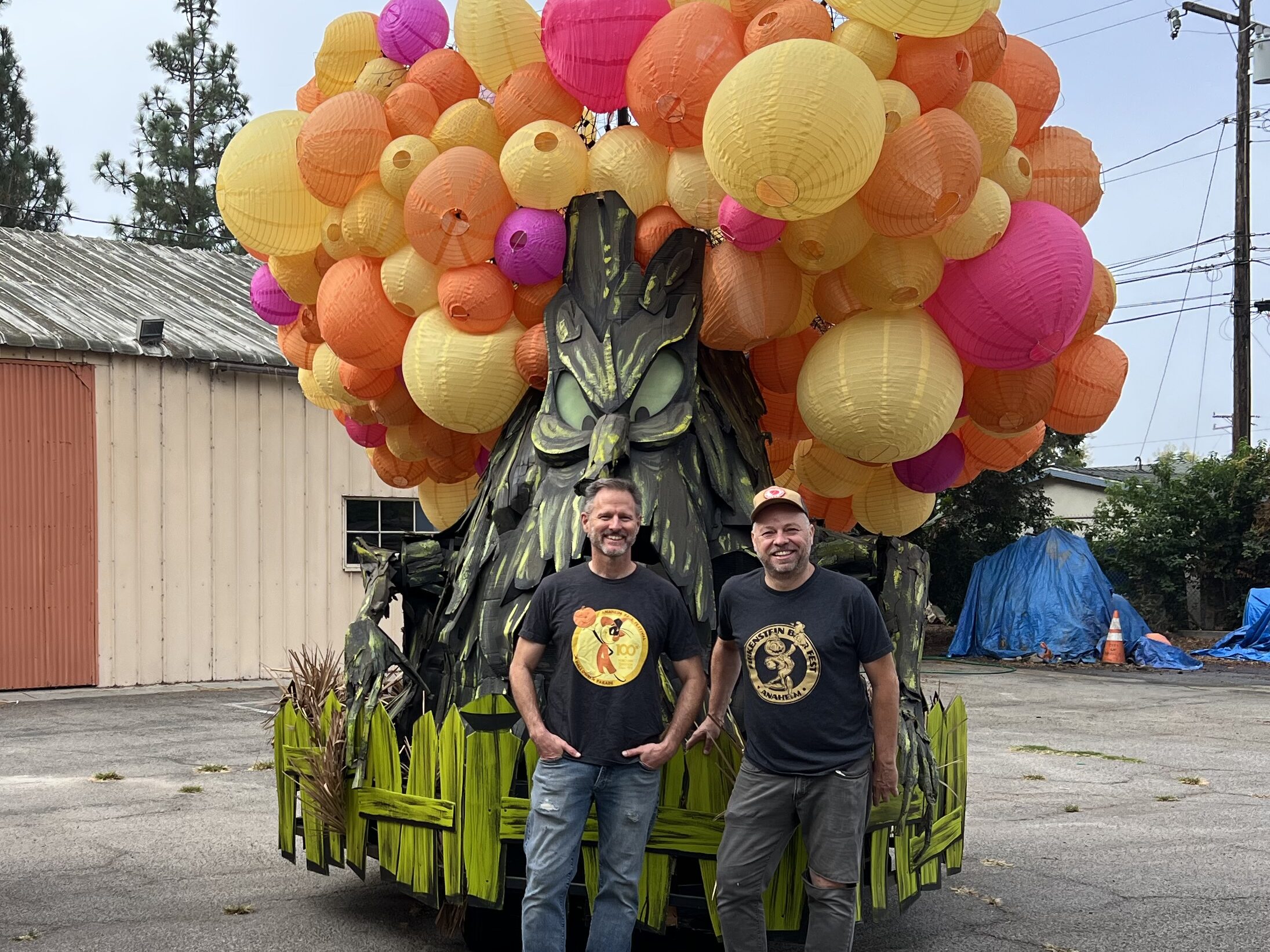
They saw an opportunity to use their skills and expertise to help revive the celebration and bring the community together.
They worked with local businesses, community members, and Disney, and the Anaheim Halloween Parade was brought back in 2012. Paying homage to the celebrations of the past, they have recreated some of the most iconic floats of the past, including the “Flying Sasser” and “Rocket Witch.”
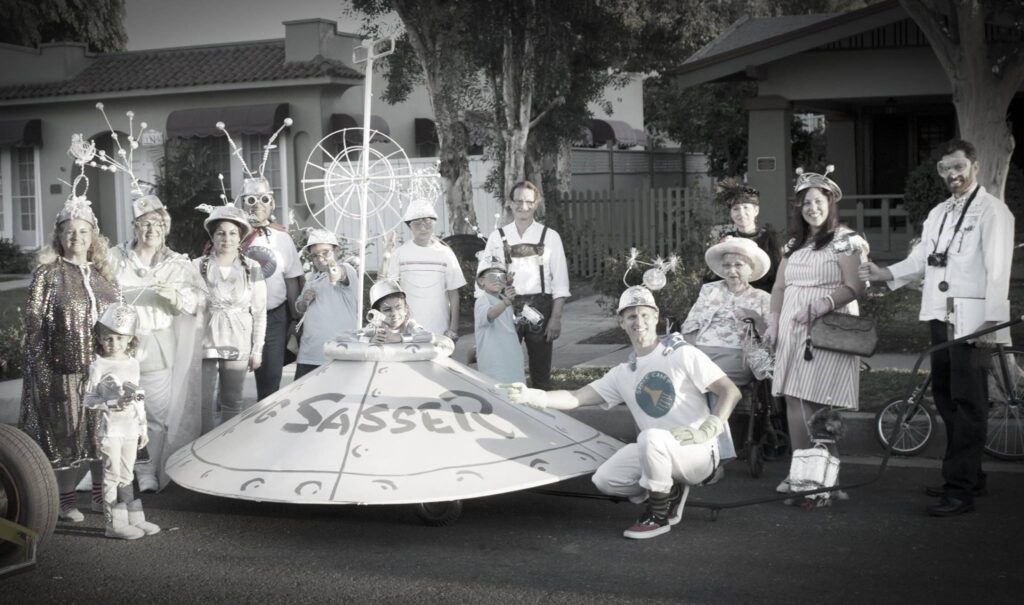
Photo Credit: Courtesy of the Anaheim Fall Festival and Halloween Parade.
Along with commemorating the history of the parade, they also celebrate the multicultural community of today’s Anaheim, with a Dia de Los Muertos section of the parade, celebrating the large Mexican-American community of the city.
The celebration is now called the Anaheim Fall Festival & Halloween Parade and operates as a non-profit, working together with the city of Anaheim and various sponsors, including Disneyland. The organization is made up entirely of passionate and talented volunteers, that not only help design and build the floats, but also help raise funds for the celebration with special events like The Firkenstein Craft Beer Festival and by making and selling some amazing Halloween Parade-themed merchandise.
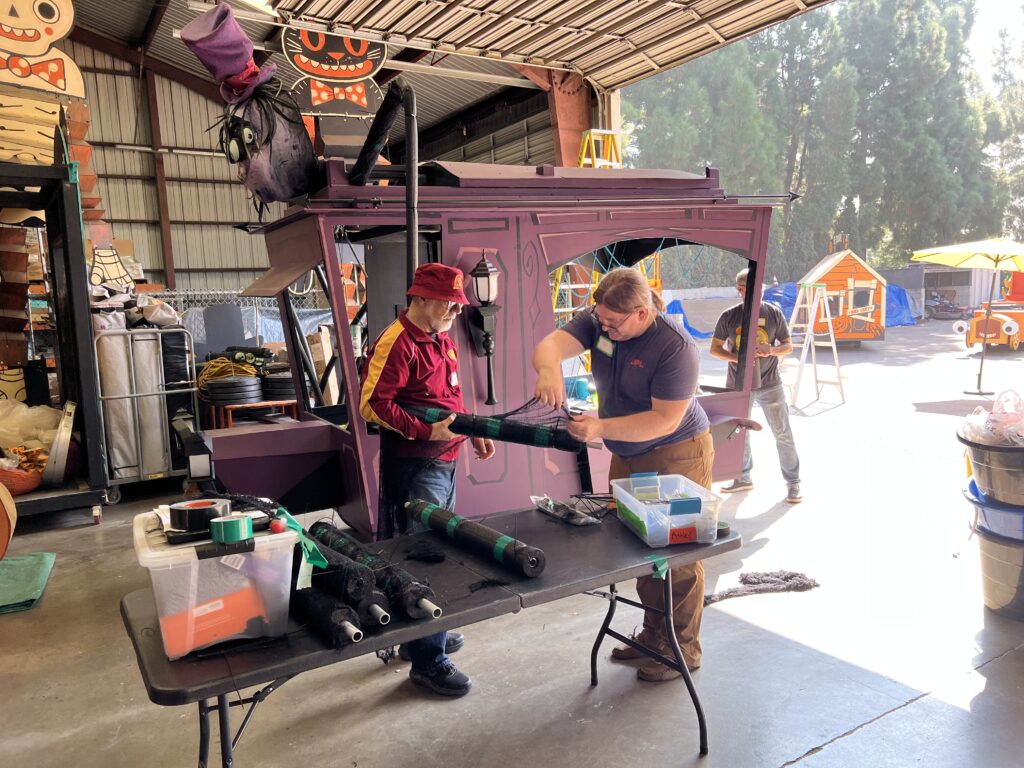
The celebration, held on the Saturday before Halloween starts with the Fall Festival, with food vendors, artist booths, photo ops, and a costume contest for kids and dogs. This is followed in the evening with the Halloween Parade, where the hand-built floats, marching bands and dance groups march along the 1.5-mile-long parade route.
So, if you’re looking for a unique way to celebrate Halloween, why not pay Anaheim a visit? And see the culmination of the hard work of hundreds of volunteers who help keep this tradition alive. It truly is the embodiment of community spirit.

